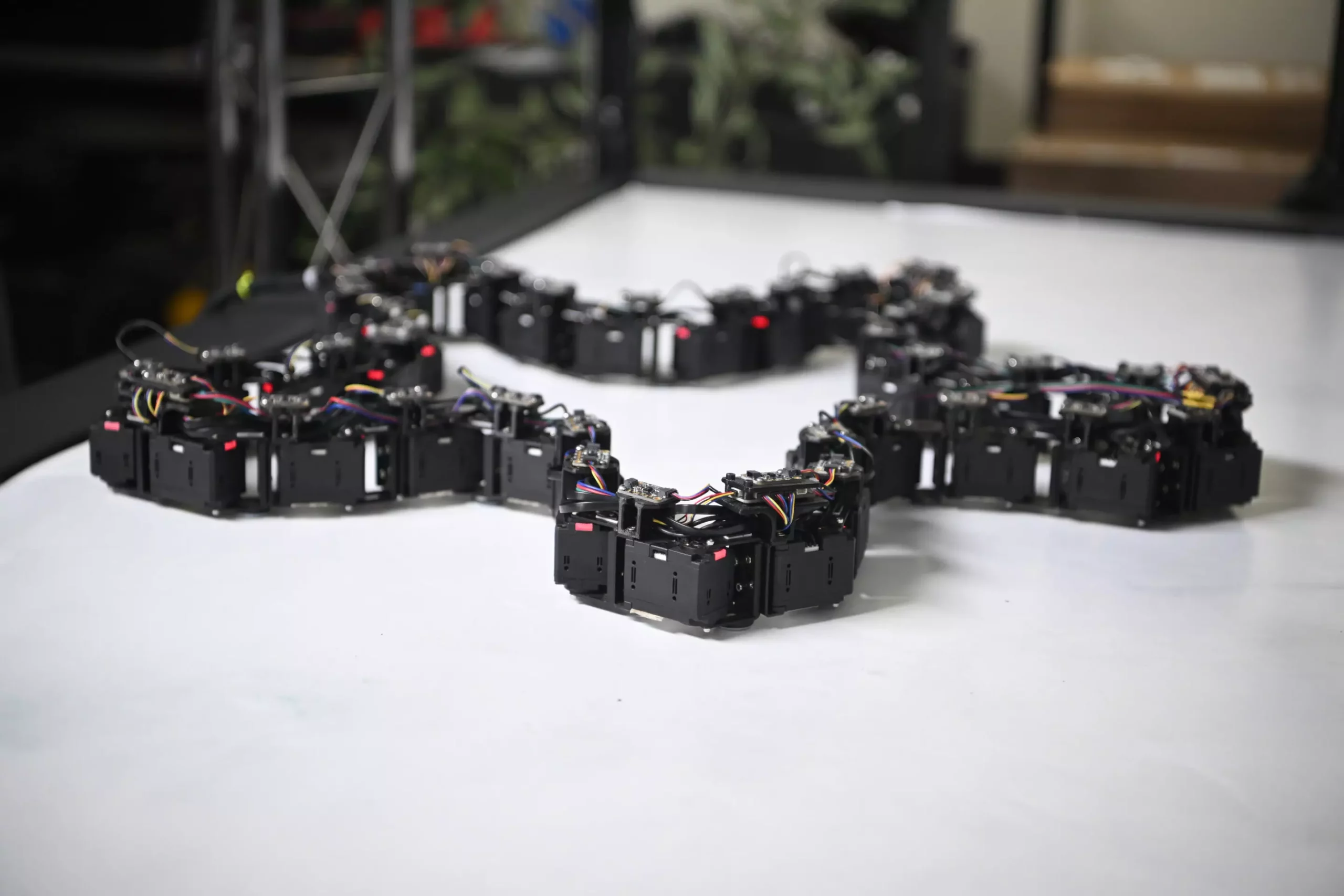In a groundbreaking venture into robotic autonomy, the team at West Virginia University (WVU) is challenging our existing perceptions of robotics with an innovative creation known as Loopy. This multicellular robot, which functions through a circular arrangement of interconnected modules, represents a departure from traditional autonomous systems that rely heavily on pre-programmed behaviors. Instead of relying exclusively on human input to dictate its functions, Loopy conceptualizes its shape and responds to its surrounding environment in an organic manner, effectively “co-designing” itself.
Lead researcher Yu Gu, a distinguished figure in the field of mechanical, materials, and aerospace engineering at the WVU Benjamin M. Statler College of Engineering and Mineral Resources, has noted that Loopy’s ability to self-reshape could redefine robotics as we know it. The potential applications for this technology stretch far and wide, particularly in unpredictable scenarios, such as environmental cleanup following oil spills or chemical contamination. Drawing inspiration from natural phenomena, Loopy mimics behaviors observed in ant swarms or the adaptive growth patterns of tree roots as they navigate obstacles in their environment.
At the heart of Loopy’s design is the concept of swarm robotics, where numerous simple units—each with limited functionality—interact to exhibit complex, emergent behaviors. Gu’s vision departs from the conventional “top-down” approach to robotic design, where human engineers are the main architects, and robots simply execute tasks as programmed. Instead, Loopy uses a decentralized architecture, allowing nodes within the system to respond to stimuli without central control, thereby fostering adaptability and flexibility.
Loopy is constructed from 36 identical cells, each capable of sensing external conditions and controlling its movement. This results in a dynamic system where each unit can make decisions based on its local environment, leading to an impressive ability to adjust to changing conditions. The laboratory equipped with advanced observational technology—including overhead cameras and motion capture—provides a fertile ground for testing Loopy’s capabilities under various scenarios, including the identification and circling of contamination zones.
The research team, including doctoral student and NSF graduate fellow Trevor Smith, is investigating how Loopy interacts with its environment, especially in unpredictable scenarios that introduce different obstacles and surface materials. They are not just measuring the efficiency of Loopy’s response capabilities but are also venturing into the realm of adaptability—how well it can navigate novel conditions that differ from its training environment.
Unlike traditional robots designed to operate within a specific set of parameters, Loopy’s organic approach may lead to new insights into how self-organized systems tackle challenges. Gu remarked on the nonlinear and often unpredictable nature of their research, highlighting that unexpected outcomes serve to enhance understanding and open doors to further investigation. This unpredictability could ultimately enhance robotics’ potential, creating systems that respond with sophisticated solutions that rival or surpass engineer-designed protocols.
Gu draws parallels between their robotic endeavors and principles seen in nature, particularly in agricultural practices like permaculture. Just as permaculture emphasizes working harmoniously with natural ecosystems, the design of Loopy aligns with an ethos where robots, humans, and their environments must collaborate. This philosophy underpins the project, suggesting a harmonious triad that fosters increased adaptability and sustainability in robotic technologies.
Moreover, the inspiration for Loopy’s behavior has deep biological roots. Gu acknowledged the role of plant intelligence—specifically, how plants utilize chemical signals and decentralized responses to adaptively coordinate growth. This mimicry of biological processes adds another layer of complexity to the design of Loopy, highlighting the interconnectedness of form, behavior, and environment that defines both robotic and natural systems.
The development of Loopy by the WVU roboticists marks a pivotal moment in the field of robotics. By embracing a model that prioritizes collective, self-organizing behavior over rigid programming, they are setting a precedent for more adaptive and resilient robotic systems. The transformative potential of this research stretches beyond theoretical applications, envisioning practical usages in areas ranging from emergency spill containment to interactive art installations.
As technology continues to evolve and redefine our interactions with machines, Loopy represents not just a technological advancement but a paradigm shift in how we conceptualize autonomy in robotics. This project blurs the lines between the physicality of a robot, its operational behavior, and its environmental context—the very essence of adaptive intelligence in the age of autonomous systems.


Leave a Reply